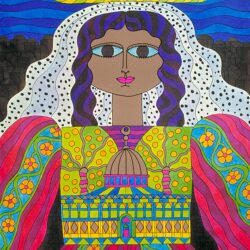The Influence of Man Ray on Belgian Designers

With 'Man Ray and Fashion', MoMu delves into the connections and relationships between Man Ray’s striking fashion photography and some of the most iconic silhouettes of many contemporary Belgian designers, including Dries Van Noten, Martin Margiela, Dirk Van Saene and Olivier Theyskens.
We caught up with Romy Cockx, Curator behind 'Man Ray and Fashion', to discuss the radical nature and visionary edge of Man Ray’s images, some of the key designers featured within the exhibition, as well as the relevance of Surrealism to Belgian culture as a whole.
Why did you think it was the right moment to address the relationship between Man Ray’s images and Belgian fashion?
"There were already exhibitions on his fashion photography that took place in France, namely in Paris and in Marseille. Once I started looking into his pictures, I quickly understood that there were links with prominent Belgian designers, specifically Martin Margiela. We thought it’d be exciting to investigate this further and look at the connections between his photography and actual garments from famous Belgian names."
Which Belgian designers did you focus on?
"The first reference to Man Ray within Belgian fashion is rather explicit, and goes back to the couture house Norine. Honorine Deschryver, who had founded Norine with her partner Paul-Gustave Van Hecke, also worked with René Magritte. Van Hecke was a big promoter of the Surrealist movement. The motif of the isolated eye, which is a leitmotiv within Man Ray’s work, appears in Dirk Van Saene’s collections as well."
Martin Margiela is known for hiding his models’ faces throughout the years. Was he inspired by Magritte’s paintings or Man Ray’s pictures of a masked Juliet?
"The painting (The Lovers, 1928) came first. Talking to Martin Margiela, he told me that he definitely remembered Man Ray's picture of Juliet in a veil. Man Ray was keen on creating a certain mystery around himself, which you could apply to Margiela and his enigmatic fashion persona."
How did Man Ray get into fashion photography?
"While living in New York, he learned photography with some technical advice from Alfred Sieglitz. In 1921, he moved to Paris and photographed Jean Cocteau who introduced him to anyone that mattered at the time. Man Ray did a lot of portraits before a shoot for Paul Poiret. That shoot didn’t go very well, but while processing the images, Man Ray rediscovered the rayograph, which he became famous for. In 1924, he was published in Vogue for the first time. His more innovative work was featured in Harper’s Bazaar."
Do you think Man Ray was radical at the time?
"He definitely was, which perhaps explains why his images still feel modern today. He also introduced the idea of the fetish within fashion photography, which was a direct influence from the writing of the Marquis de Sade. He photographed from unexpected angles and his artistic interpretation was more important than the factual depiction of the clothes. His use of techniques like solarization and multiple exposure was very daring at the time. Margiela also told me that what he loved the most about Man Ray is that his work raises questions, instead of providing answers."
The absurdity inherent in surrealism seems to be part of Belgian culture as well. How do you explain the relationship between the two?
"There is definitely a sense of irony within Belgian fashion and culture as a whole, which echoes in surrealism and the idea of something strange, bizarre or unexpected. In general, I’d say most Belgian designers love playing with codes - and eventually twist them - in order to create something inspiring."
'Man Ray and Fashion' is on view through 13 August 2023. More info and tickets available here






